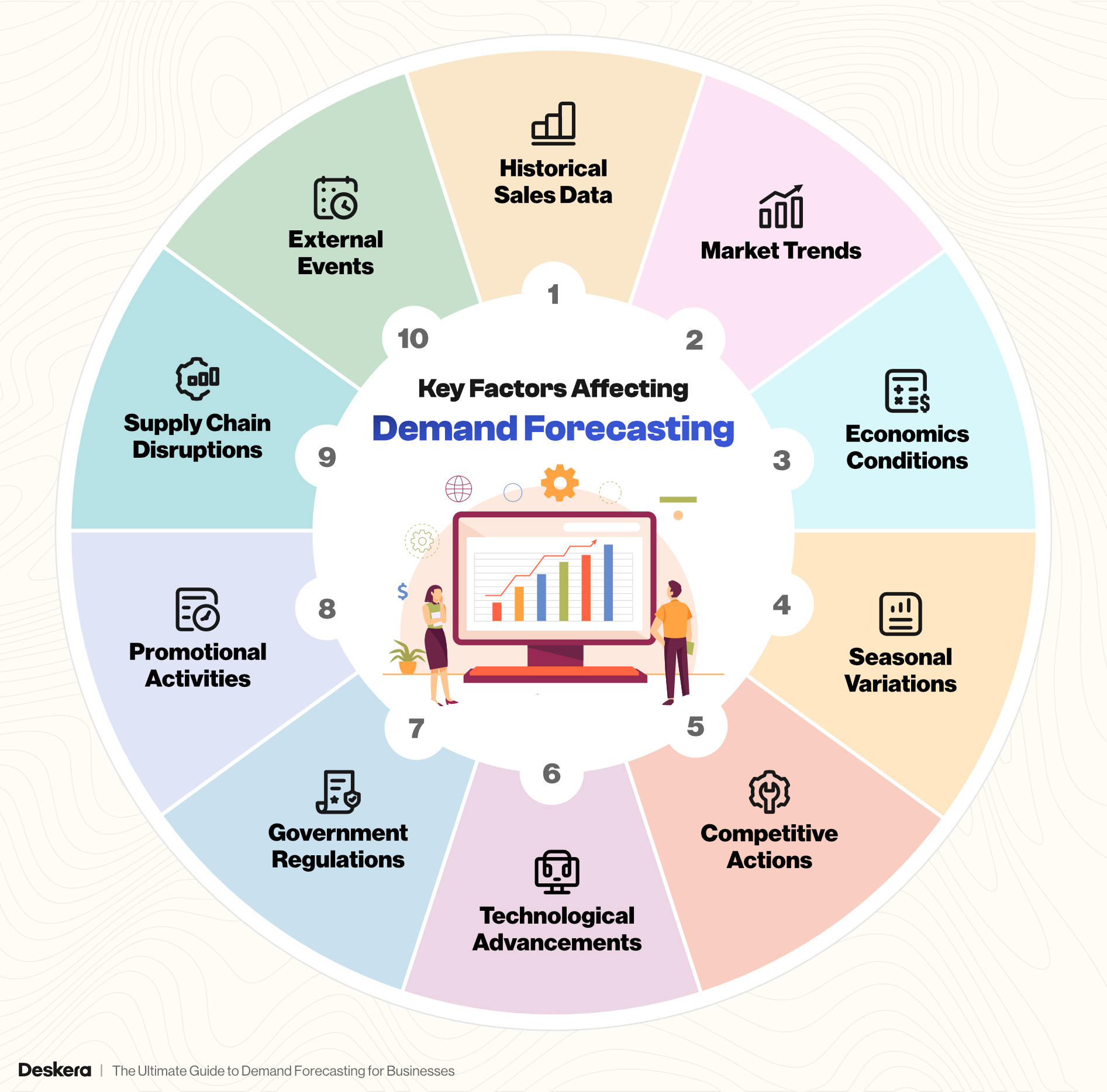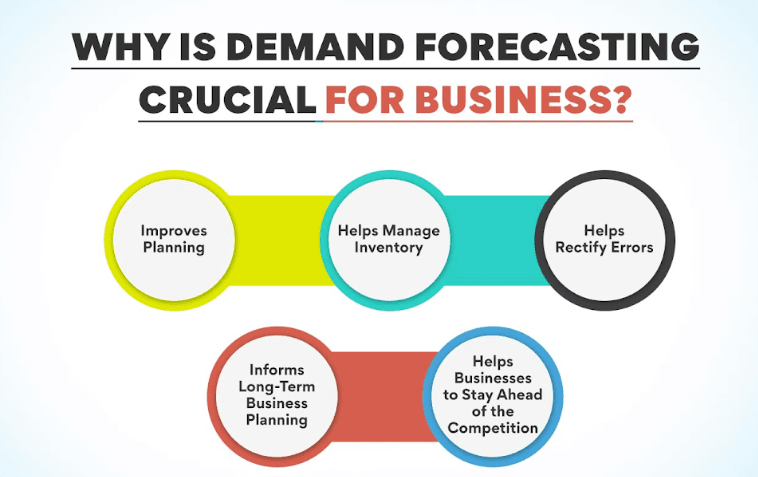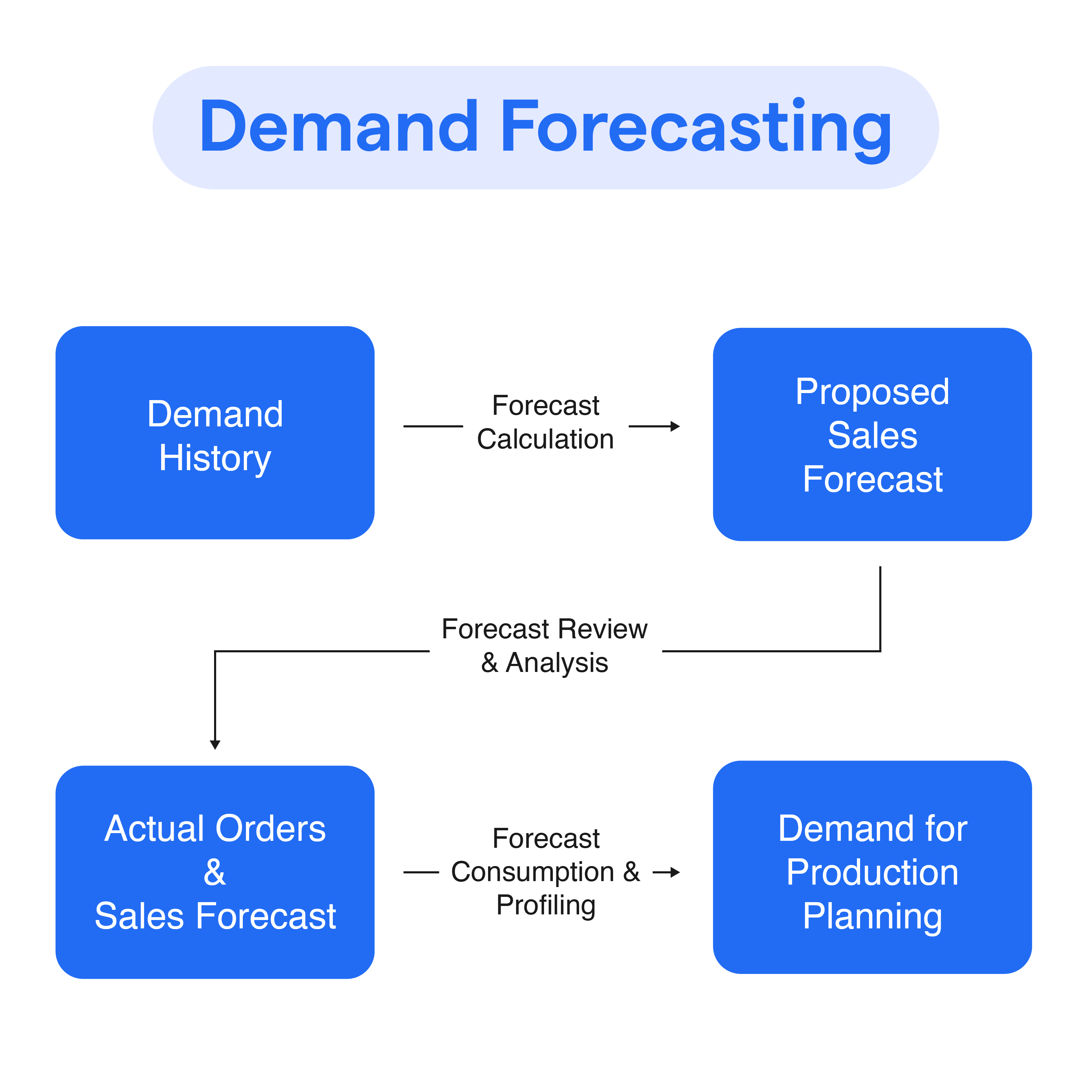Demand Forecasting
(2025-09-24T11:53.151Z)
Perplexity Query
(2025-09-24T11:53
.151Z)
Question:
Write a comprehensive one-page article about "Demand Forecasting".
Structure the article as follows:
Model: sonar-pro
Predicting the Future for Smarter Business Decisions
Introduction
Demand forecasting is the analytical process of predicting future customer demand for goods or services based on historical data, market trends, and predictive analytics.
[iqee27]
[qv7bcd]
Its significance lies in empowering organizations to optimize inventory levels, streamline production, minimize costs, and maximize profits by aligning supply with anticipated demand.
[ptc6ty]
In today’s volatile business environment, reliable demand forecasts are critical to staying competitive and responsive.

Examples and Benefits
Demand forecasting combines both qualitative (such as market research, news trends, and customer feedback) and quantitative approaches (including sales history, seasonal cycles, and web analytics) to form a comprehensive outlook on probable future demand.
[iqee27]
[qv7bcd]
Modern systems often leverage artificial intelligence (AI) and machine learning to analyze deep datasets and deliver increasingly precise forecasts.
[iqee27]
[y23tfh]
The chosen methodology may depend on the forecast horizon, data availability, and business context.
Practical examples illuminate the concept:
- Retailers use demand forecasting to determine how much inventory to order seasonally, avoiding both stockouts and costly overstocks. If an online sunglasses retailer notices a sales spike every summer, demand forecasting will guide them to stock up before the season hits, ensuring smooth sales and high customer satisfaction. [ptc6ty]
- Supply chains depend heavily on forecasting: Companies like Coca-Cola generate customized reports for store-level demand and proactively schedule maintenance or restocking for vending machines. [y23tfh]
- Restaurants and hospitality forecast food and beverage consumption by analyzing previous years’ events, holidays, and weather patterns, ensuring resources match guest turnout.
- Manufacturers plan production schedules, raw material orders, and labor shifts based on anticipated demand curve fluctuations.
The benefits of demand forecasting are extensive:
- Cost savings result from synchronizing production and distribution with actual market needs.
- Improved customer experience by ensuring products are available when wanted.
- Strategic planning for marketing, expansion, and talent acquisition is facilitated by reliable forecasts.
However, several challenges exist:
- Selecting the appropriate forecasting model and integrating robust data-sharing practices is essential. [qv7bcd]
- Regularly reviewing forecast accuracy and adjusting methods helps maintain relevance in fast-changing environments.

Current State and Trends
Demand forecasting is now ubiquitous across industries, fueled by advancements in cloud computing, predictive analytics, and AI. Major players like SAP, Salesforce, and Alteryx offer integrated platforms that connect demand predictions with broader supply chain and financial planning tools.
[iqee27]
[ptc6ty]
[y23tfh]
Companies such as 7-Eleven are leveraging machine learning to interpret millions of data points for real-time forecasting across thousands of stores, adjusting for factors like promotions and changing consumer behavior.
[y23tfh]
Recent trends include:
- Closer integration with enterprise resource planning (ERP) and supply chain management solutions. [iqee27]
- Growing use of real-time external data sources for responsive, dynamic forecasting. [y23tfh]

Future Outlook
The future of demand forecasting will center around enhanced predictive accuracy and automation. AI’s ability to learn from complex and rapidly changing datasets will continue to drive improvements, enabling companies to quickly pivot in the face of market shifts.
[iqee27]
[y23tfh]
As supply chains become more interconnected, forecasting will expand beyond individual organizations toward synchronized, global networks—enabling industry-wide agility and resilience.
Conclusion
Demand forecasting stands as a foundational strategy for modern business, converting data-driven insights into operational success. As technology transforms its capabilities, organizations will benefit from ever-more accurate predictions, shaping a proactive and adaptive future.
Citations
[iqee27] 2025, Sep 24. Demand forecasting for the modern supply chain - SAP. Published: 2021-04-16 | Updated: 2025-09-24
[ptc6ty] 2025, Sep 24. What is Demand Forecasting? - Salesforce. Published: 2024-03-19 | Updated: 2025-09-24
[y23tfh] 2025, Sep 22. What Is Demand Forecasting? - Alteryx. Published: 2025-08-12 | Updated: 2025-09-22
[qv7bcd] 2025, Sep 24. Demand Forecasting Guide: Definition, Types, Methods, Examples. Published: 2025-07-08 | Updated: 2025-09-24
[5]: 2025, Sep 09. Demand Forecasting: Definition, Methods, Types & Benefits. Published: 2020-08-18 | Updated: 2025-09-09
[6]: 2025, Sep 22. What Is Demand Forecasting? Definition and Techniques. Published: 2025-06-11 | Updated: 2025-09-22
[7]: 2025, Sep 23. Demand Forecasting in the Age of AI & Machine Learning. Published: 2025-07-25 | Updated: 2025-09-23
[8]: 2024, Nov 28. What is Demand Forecasting in Supply Chain Management?. Published: 2024-11-20 | Updated: 2024-11-28